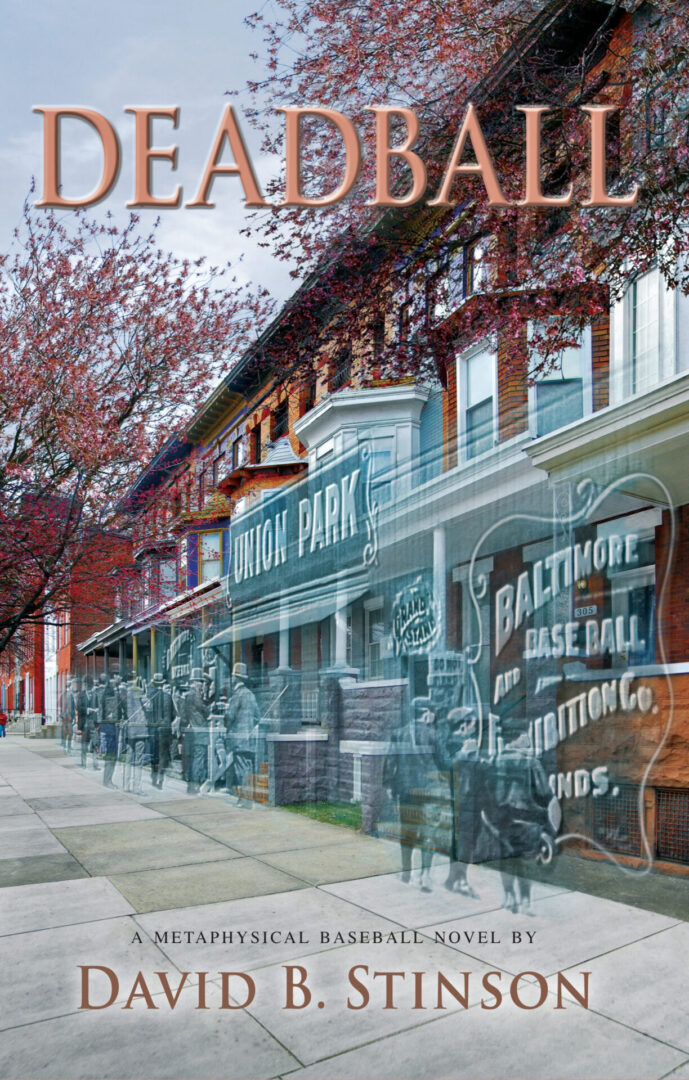Fort Lauderdale Stadium is located at 1401 NW 55th Street, Fort Lauderdale, Florida, just east of the Fort Lauderdale Executive Airport and north of Lockhart Stadium. Although the City of Fort Lauderdale operates the ballpark, the land it is on is part of the 64 acres that make up the airport.
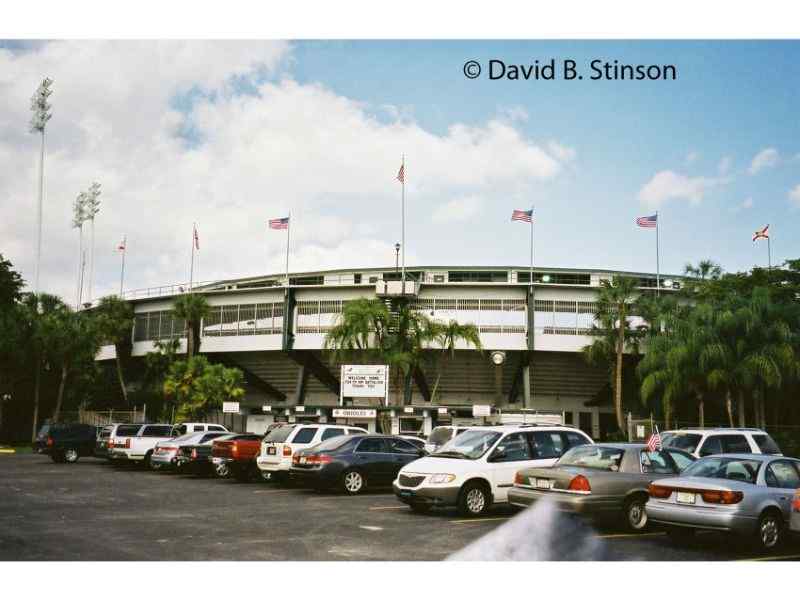
For almost 50 seasons, major league baseball teams trained at this palm tree lined outpost located just blocks from interstate 95. From 1962 until 1995, Fort Lauderdale Stadium was the spring training home of the New York Yankees. The Yankees previously had played at their spring training games in St. Petersburg, Florida at Al Lang Field and Crescent Lake Park/Huggins-Stengel Field.
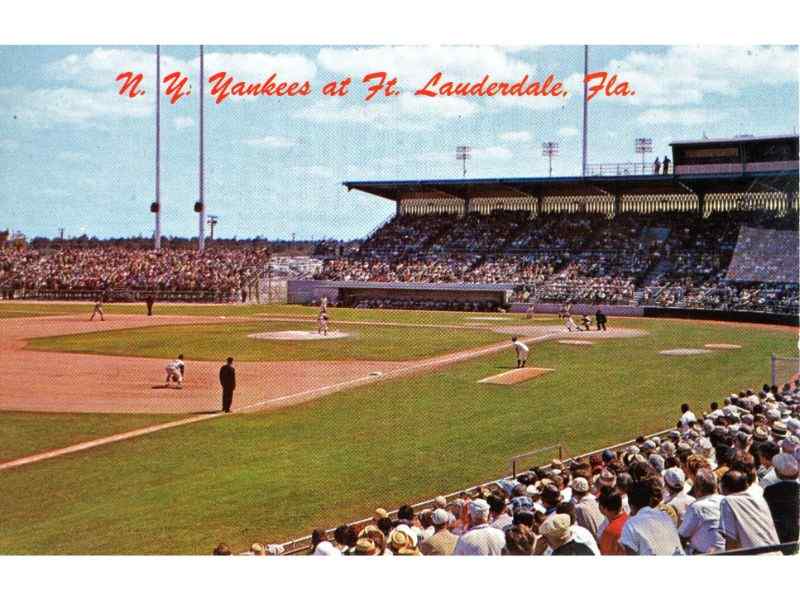
In 1996 the Baltimore Orioles moved their spring training home to Fort Lauderdale Stadium, departing St. Petersburg’s Al Lang Field, where they had trained from 1992 to 1995. From 1959 to 1990 the Orioles trained at Miami Stadium. In 1991 they trained at Ed Smith Stadium in Sarasota, Florida.
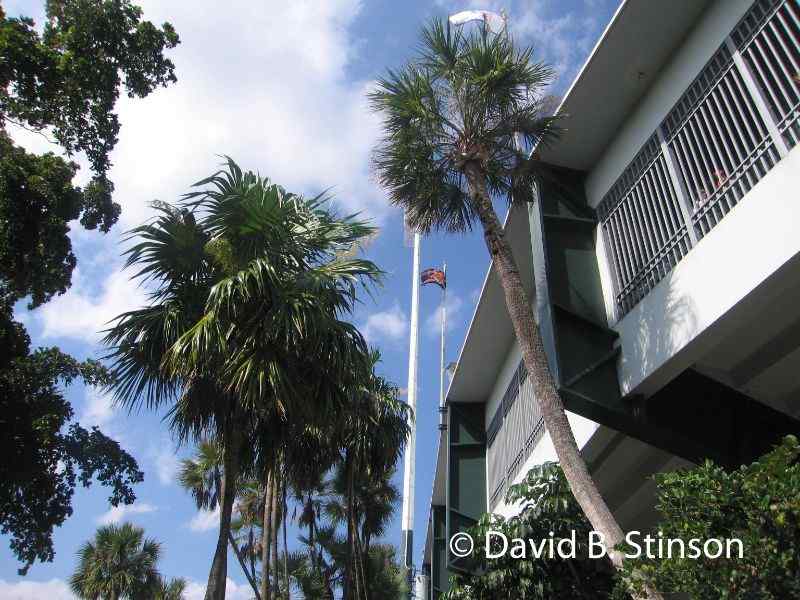
In addition to spring training games, Fort Lauderdale Stadium also hosted minor league baseball. The Florida State League Fort Lauderdale Yankees played at the stadium from 1962 through 1992, and the Fort Lauderdale Red Sox played at the stadium in 1993.
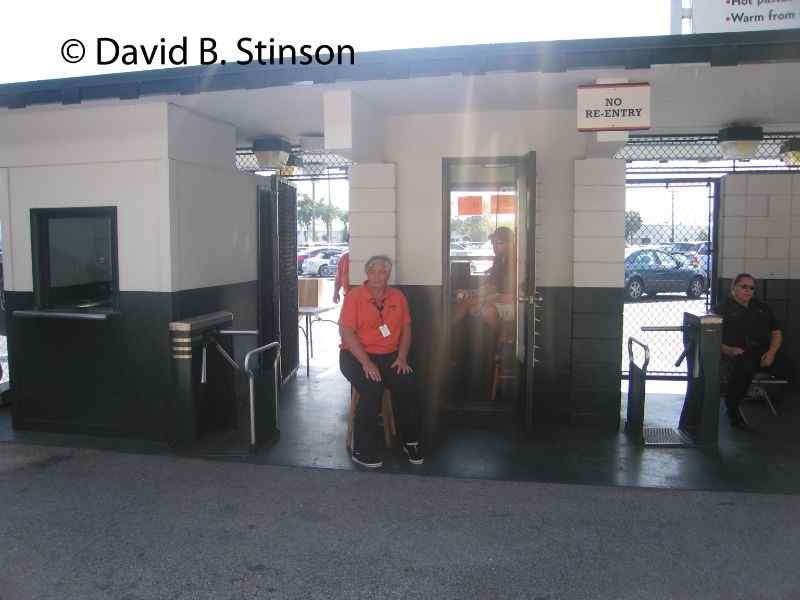
During the time in which Baltimore trained at Fort Lauderdale Stadium, the Orioles did not field any minor league team at the stadium.
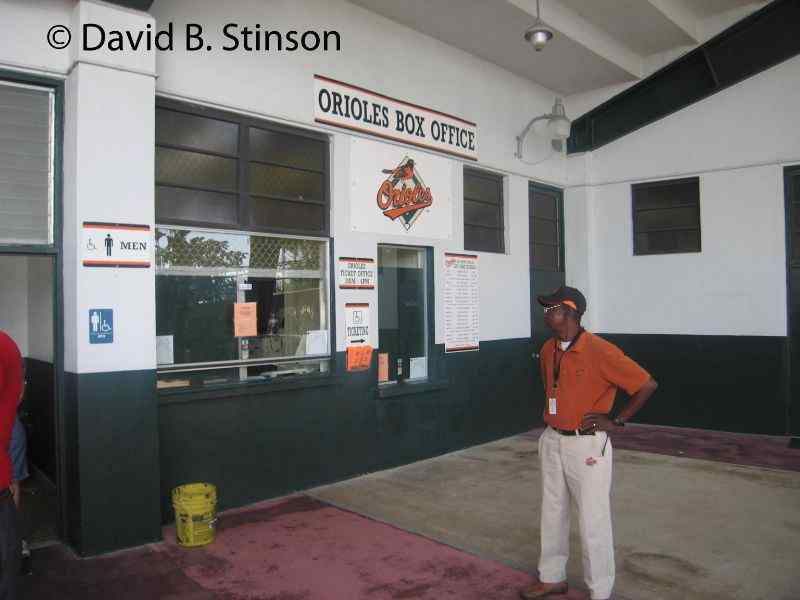
Through the years, Fort Lauderdale Stadium remained relatively unchanged from the time when the Yankees began play there in the early 1960s.
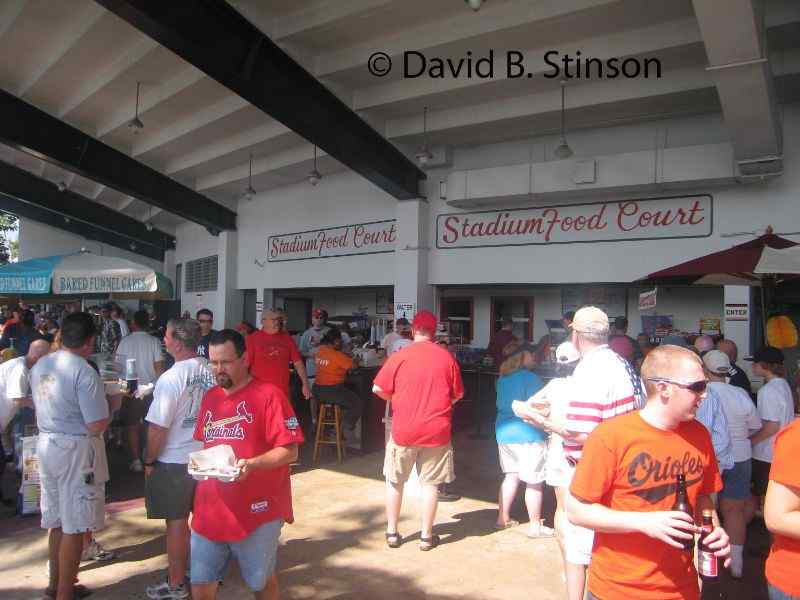
The front entrance, with its quaint marquee sign welcomed fans to baseball spring training 1960s style.
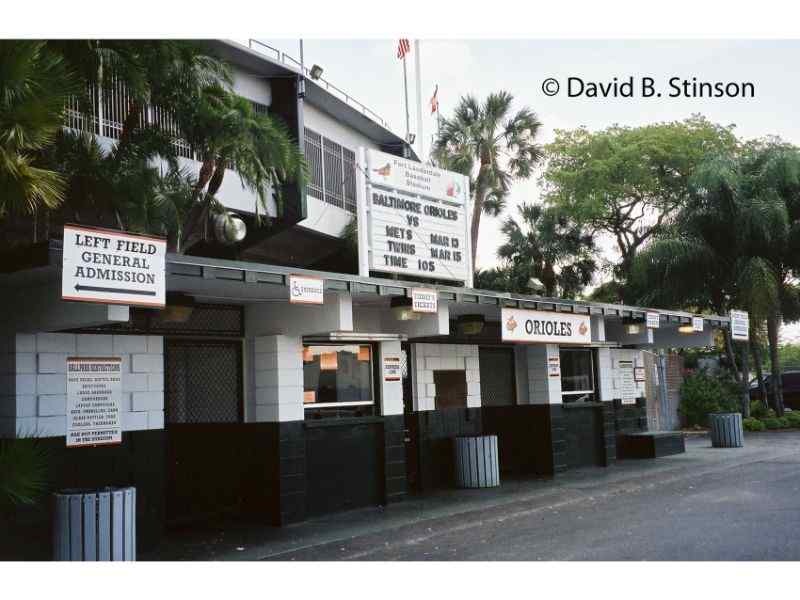
The ballpark had separate entrances for the reserved seat grandstand and the general admission bleacher sections.
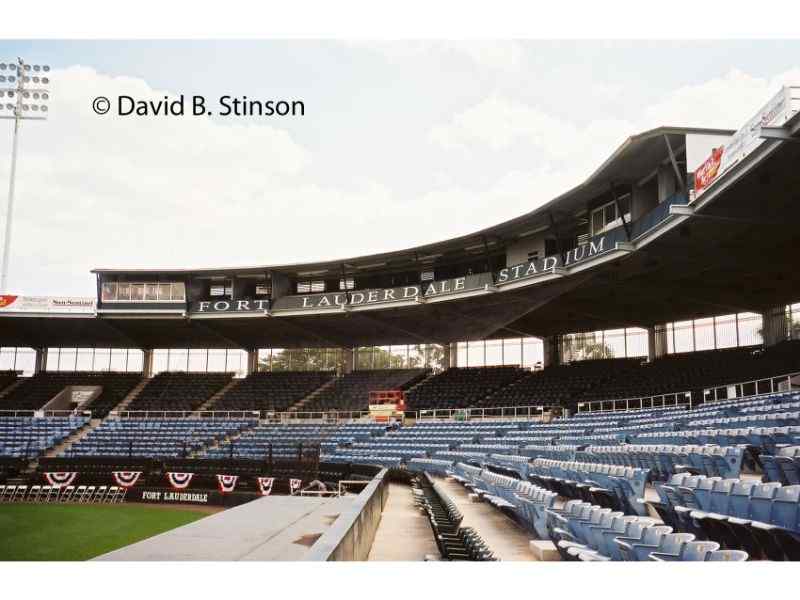
The grandstand was had only a single deck, built long before the advent of sky boxes and luxury suites. The press box sat atop the grandstand.
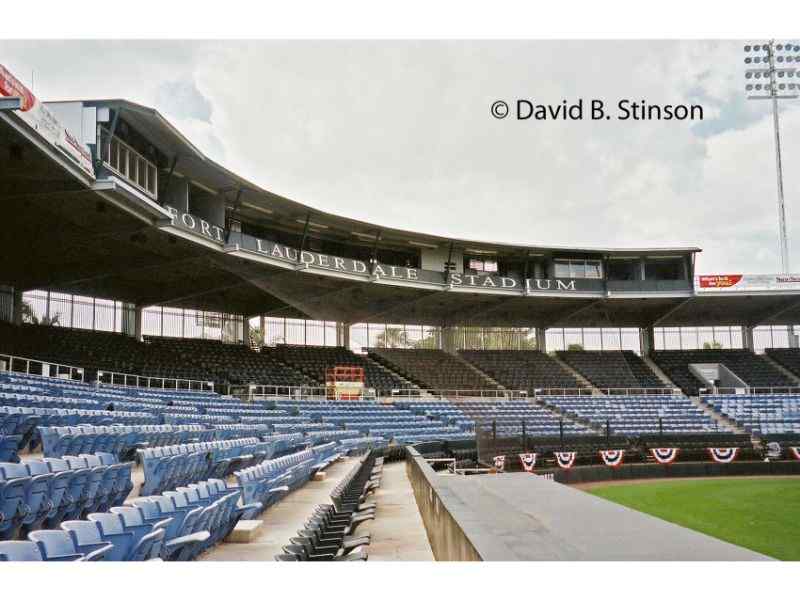
Even after the Orioles moved into Fort Lauderdale Stadium the lower seating bowl sported plastic Yankee-blue seats.
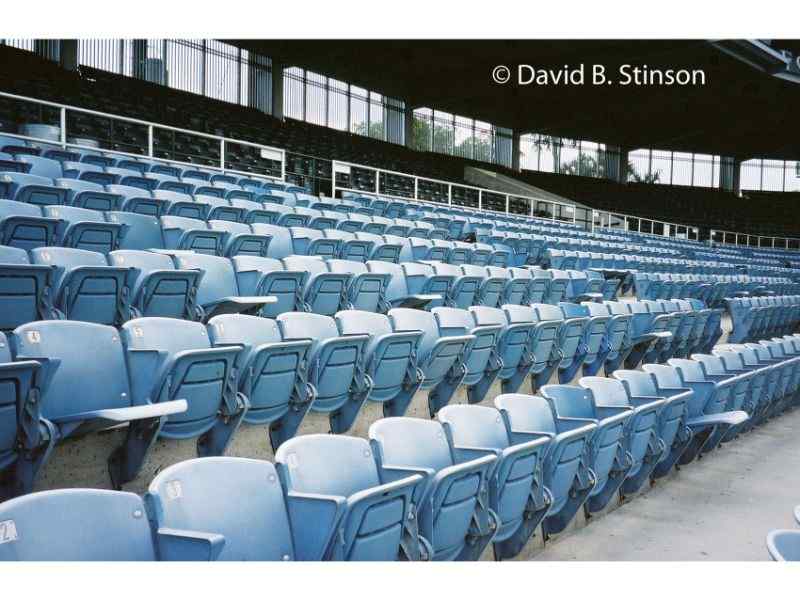
The wooden seats in the grandstand however were repainted Camden-Yards green.
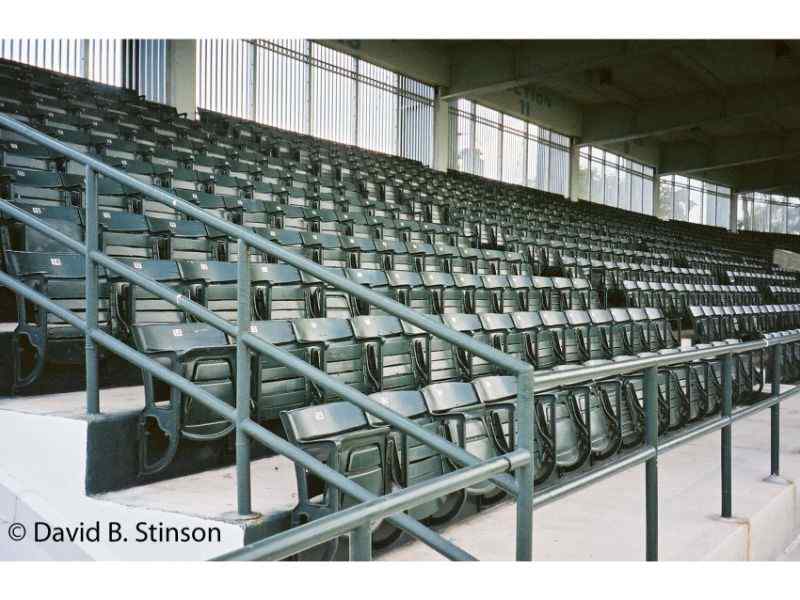
There was no seating area beyond left field, nor any picnic areas or grass berm seating, something unheard of in modern day spring training venues.

A section of bleachers with seat backs sat beyond right field. During Orioles spring training games this was a good place to sit if you wanted to be left alone. Few fans sat in the section because of its location, cut off from the rest of the ballpark amenities.
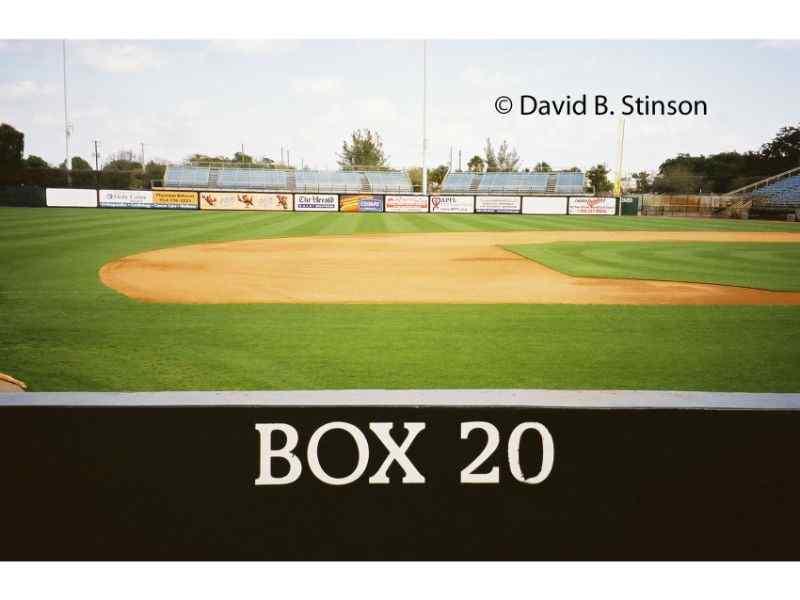
Out beyond left field were two practice fields. Because of limited space, the Orioles minor league teams trained some two hundred miles away at the Buck O’Neil Baseball Complex at Twin Lakes Park in Sarasota, Florida.
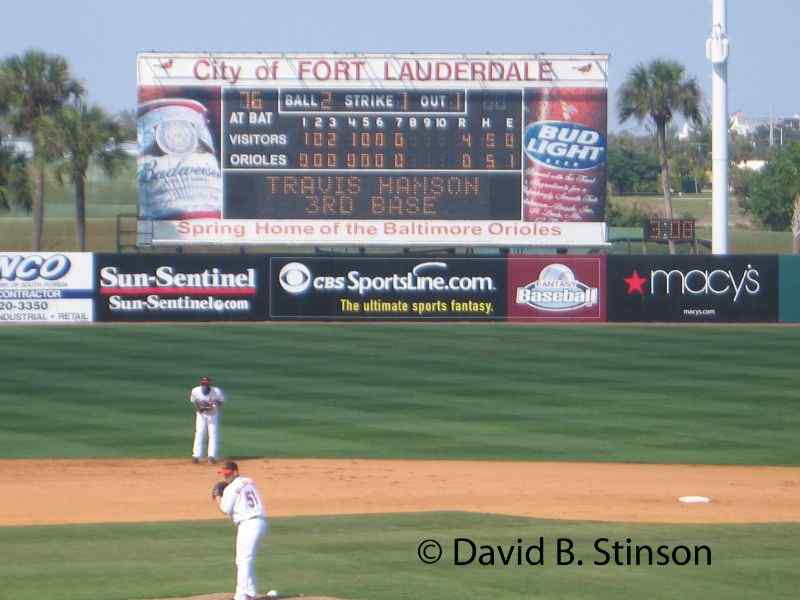
A fenced off walkway between the bleachers and the grandstand provided players access the club house to the field.

The grandstand seats – even those closest to the field – were considerably high from the ground than today’s spring training venues, making it difficult for fans to interact with the players.
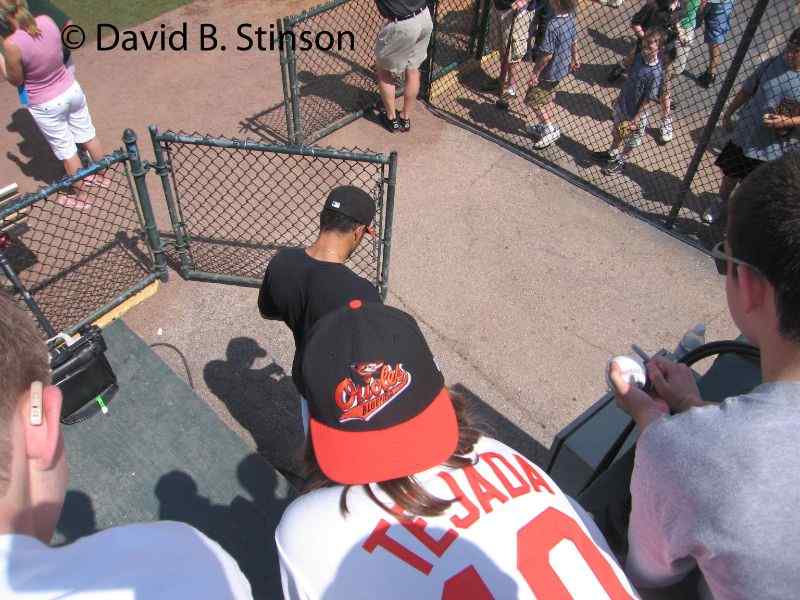
Autographs seekers congregated near the player walkway between grandstand and the bleachers.
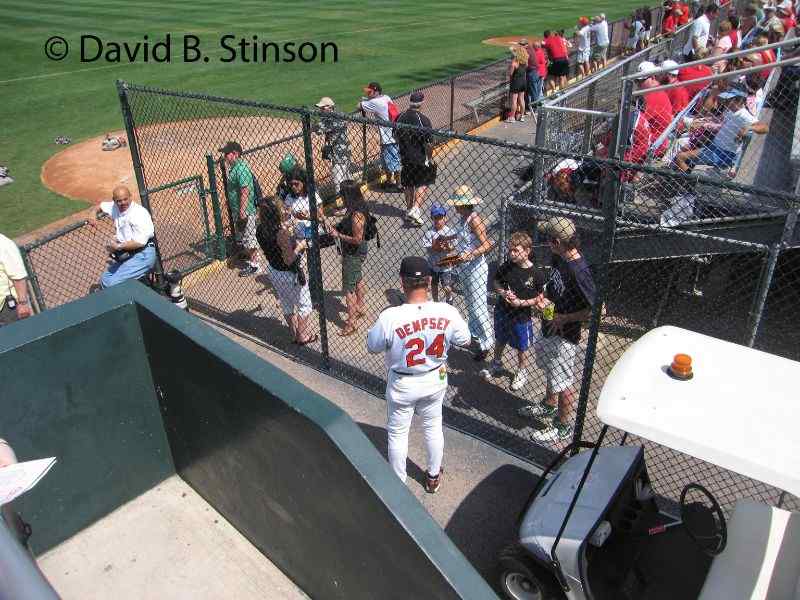
The long dugouts on either side of the grandstand also acted as a barrier for fan/player interaction.
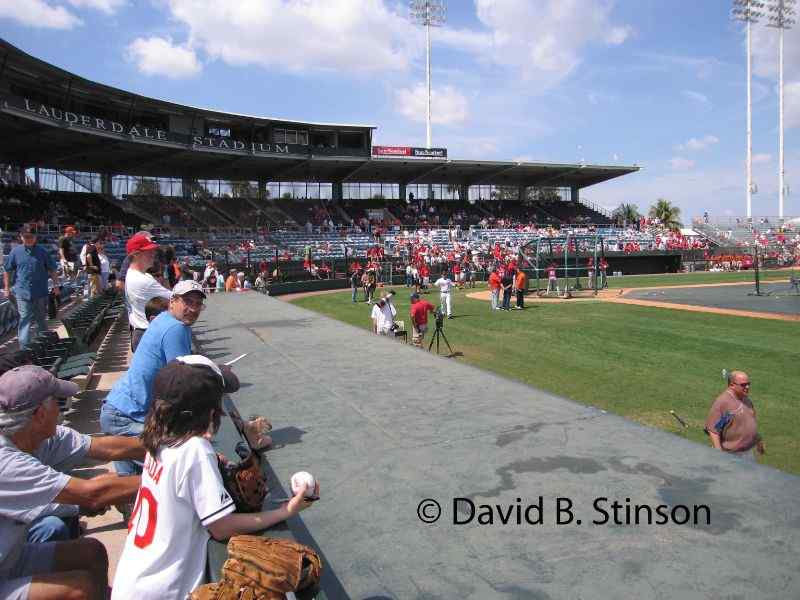
At least during the Orioles’ years at the stadium, the home team dugout was on the right side of the ballpark.
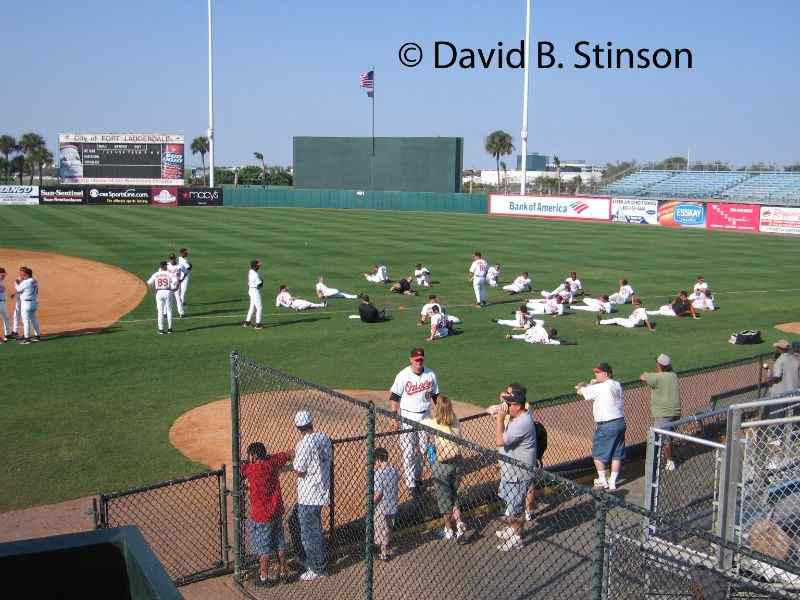
The bullpens for both teams were on the field, with pitchers sitting on open air benches next to the dugout.
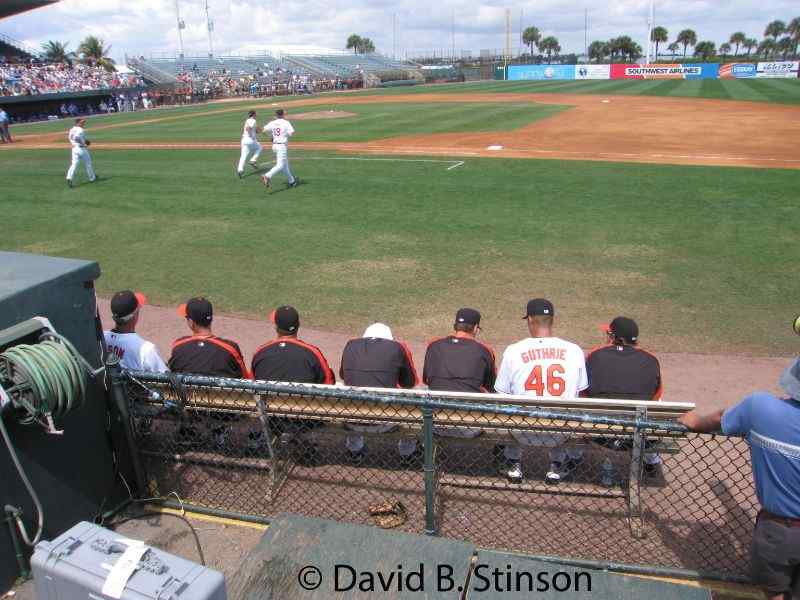
If you were a baseball purist, interested only in the game and not modern day amenities, Fort Lauderdale Stadium was not a bad place to watch a game.

The grandstand provided ample shaded seating for those not interested in sitting in the sun.
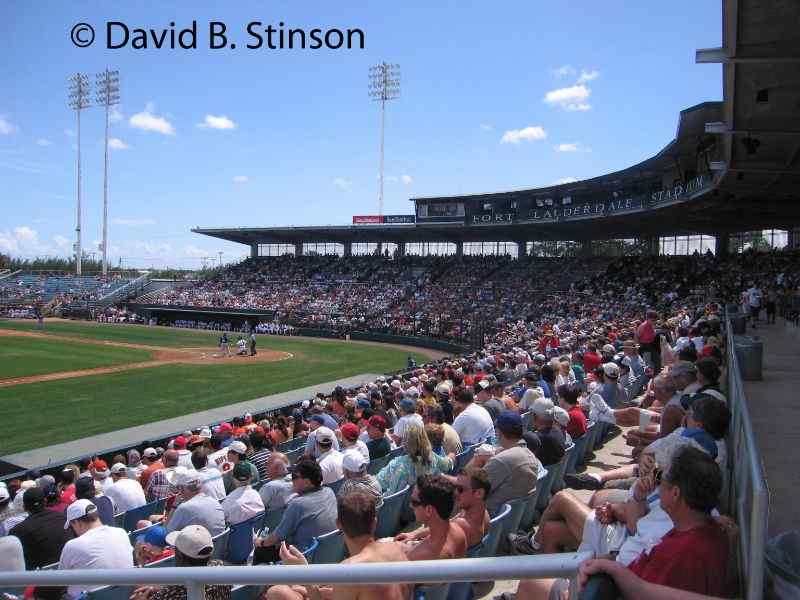
And if you were a fan of old ballparks, Fort Lauderdale certainly had earned the distinction of being one of the oldest still in use in the Grapefruit League.
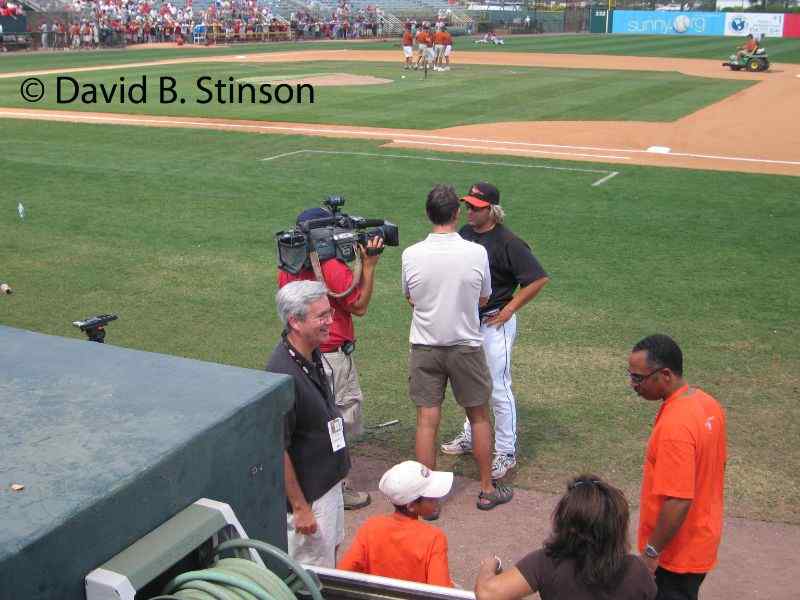
Alas, the 2009 season was the Orioles’ and major league baseball’s last year at Fort Lauderdale Stadium.
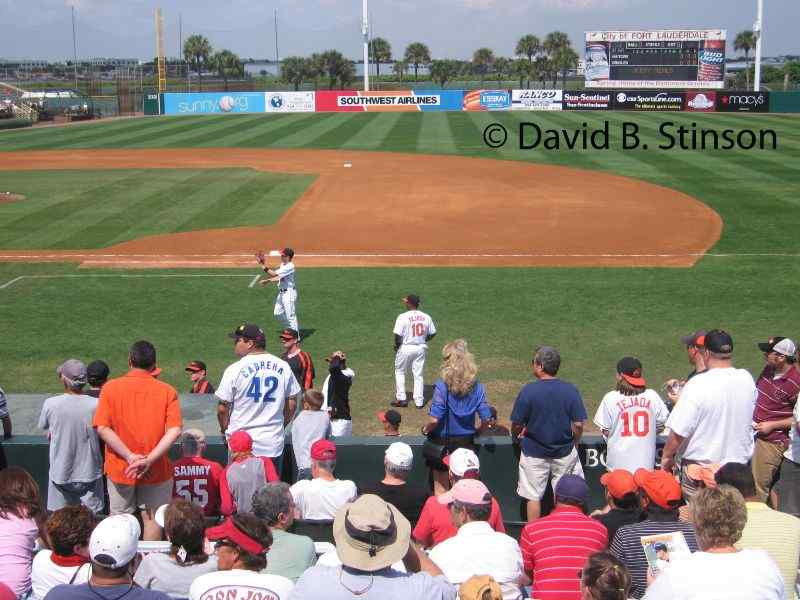
In 2010 the Orioles returned to Ed Smith Stadium in Sarasota, Florida, where they had trained for one season in 1991. After the 2010 season the Orioles and the City of Sarasota undertook a $32 million renovation of the ballpark. The results are nothing less than spectacular. The Orioles now play in one of the nicest ballparks in the Grapefruit League and hold a 30 year lease on the stadium, finally ending their once nomadic spring training existence. The move to Sarasota also brought the Orioles just ten miles from their minor league facility in Twin Lakes Park.
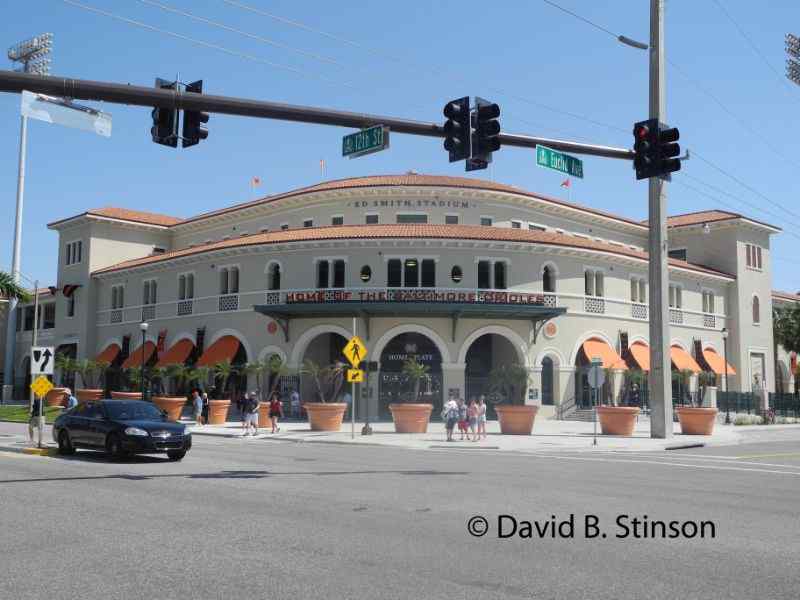
After the Orioles departed, Fort Lauderdale Stadium has been used for a smattering of local events, but no long term tenants.In 2013 the city removed the light stanchions. For several years, the city has been in protracted discussions with Schlitterbahn Water Resorts for the construction of a water park on the site. Because the land upon which the stadium sits is controlled by the Federal Aviation Commission, the FAA must approve any reuse of the property. The latest proposal being considered would have the city purchase the land from the FAA, thus removing the primary impediment for progress.
It is unfortunate that there seems to be no interest in keeping Fort Lauderdale Stadium and finding a use in keeping with its original purpose, for it is one of the baseball structures standing in Florida today. Only the grandstands at Henley Field Ballpark (1925) in Lakeland Florida, J.P. Small Memorial Park (1935) in Jacksonville, Florida, Holman Stadium (1953) in Vero Beach, Florida, and Jackie Robinson Park (1962) in Daytona Beach, Florida, as old or older.
